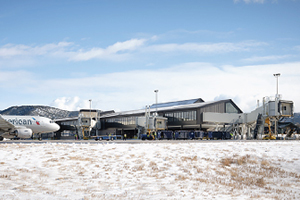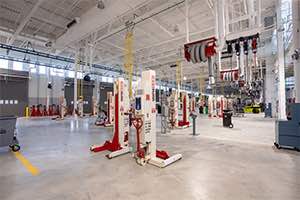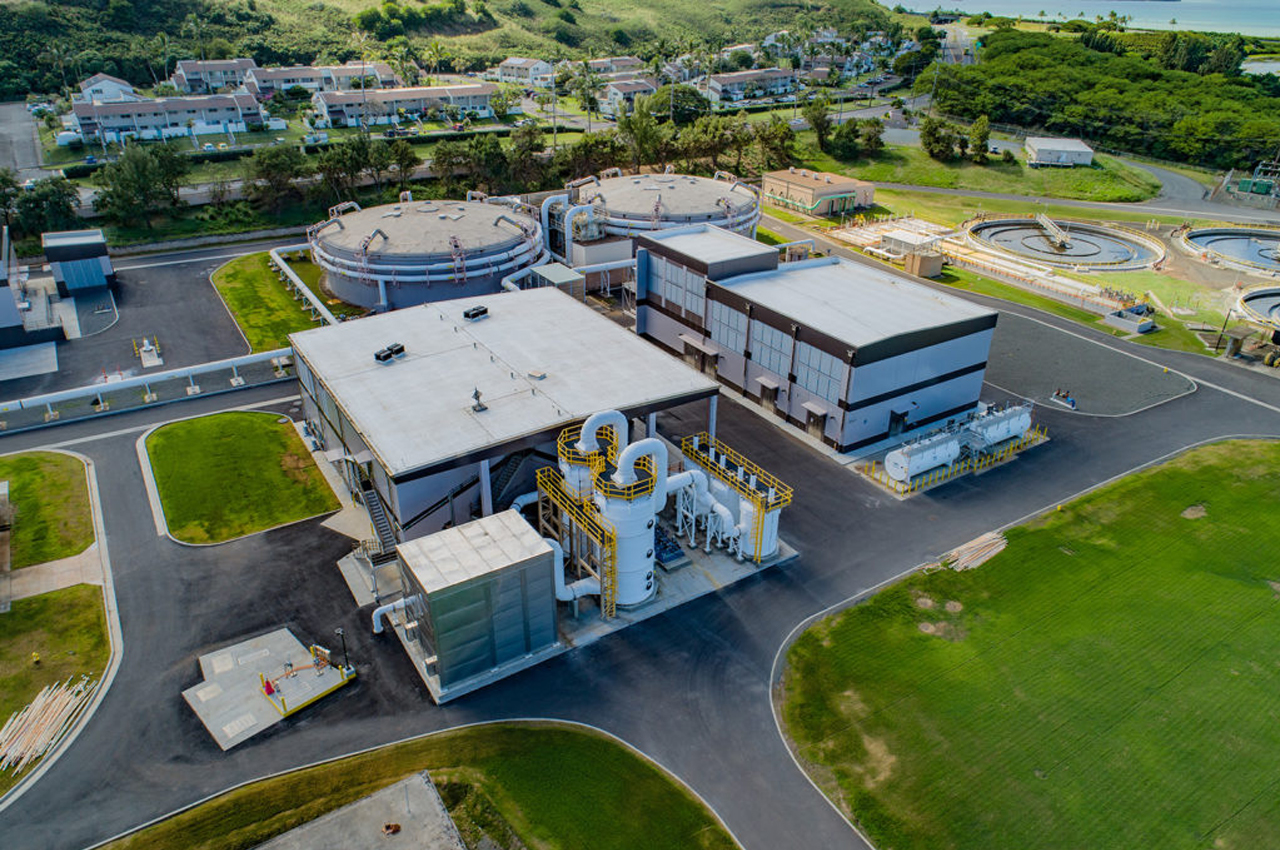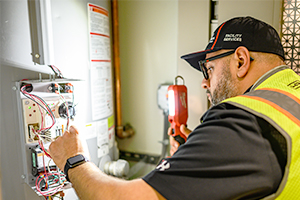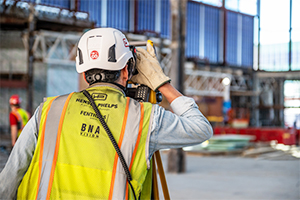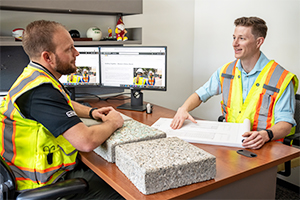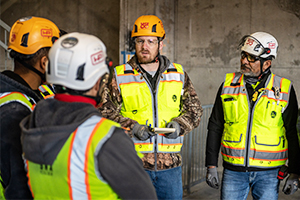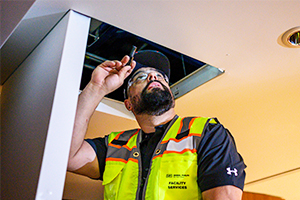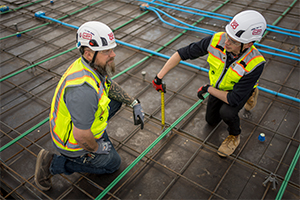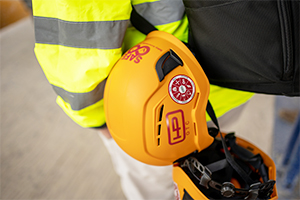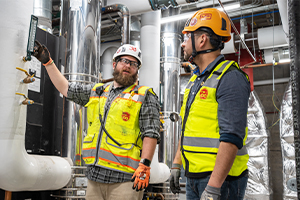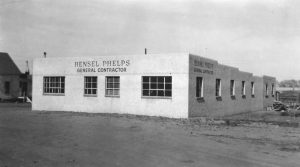
The smartest way to prepare a project site for a natural disaster is to have a plan in place ahead of time. Having a well-thought-out disaster plan optimizes a team’s ability to maintain a safe environment for local residents, ensure the protection of all equipment and materials, and assurance that the project can uphold the schedule. Securing a project site early allows employees to go home and take care of their families and personal property.
Hensel Phelps uses a contingency plan for severe weather, The Hurricane Plan, to prepare a project site before a storm. The Hurricane Plan provides and outlines the actions to be taken by a contractor in conjunction with its associates and trade partners on the project. The plan establishes resources and delineates responsibilities to ensure all possible protection is provided if facilities and equipment are threatened by a hurricane or tropical storm.
 In the fall of 2017, Hurricane Irma became the strongest Atlantic hurricane since 2015, lasting from August 31 until September 11. The category 5 storm hit South Florida on September 10, triggering Florida officials to order 6.5 million people to evacuate. During this time, Hensel Phelps was four months into the construction of the Hilton Miami Dadeland Hotel and needed to prepare the site for the storm. With Hurricane Irma bearing down on South Florida, Hensel Phelps employed The Hurricane Plan.
In the fall of 2017, Hurricane Irma became the strongest Atlantic hurricane since 2015, lasting from August 31 until September 11. The category 5 storm hit South Florida on September 10, triggering Florida officials to order 6.5 million people to evacuate. During this time, Hensel Phelps was four months into the construction of the Hilton Miami Dadeland Hotel and needed to prepare the site for the storm. With Hurricane Irma bearing down on South Florida, Hensel Phelps employed The Hurricane Plan.
The project granted a nine workday extension in order to establish resources and delineate responsibilities across all associates and trade partners. The most intensive effort involved the dismantling of the 10,000 SF of elevated concrete deck and beam formwork and securing it prior to the storm’s arrival. This extension accounted for the time spent on evacuating and returning for the staff, as well as reinstallation of the formwork upon return. Among other activities that took place to secure the site were: fueling all equipment and stockpiling additional fuel as fuel was scarce immediately following the storm, securing all equipment as theft is also common post storm, banding, strapping, or removing all loose material onsite, and laying down the boom of the crane. Hensel Phelps always takes into consideration hurricane season and hurricane zones when selecting cranes for a project site and requires all loose material either be consolidated and secured, or removed.
HOW TO DEPLOY THE HURRICANE PLAN:
The Project Superintendent is responsible for the safety of all personnel, vehicles, tools, materials, equipment, and machinery in custody of the company. With the help of the rest of the team, the Project Superintendent will ensure the proper hurricane precautions are taken to appropriately prepare all areas prior to evacuation.
A Hurricane Officer is chosen at the beginning of the project to educate the entire team and trade partners of the approaching storm season. Responsibilities include:
- Track incoming storms during hurricane season (June to November).
- Inspecting the project site at the beginning of the season to establish a baseline condition, then periodically throughout the season as project site conditions change on a weekly basis.
- Conduct a briefing—detailing the requirements of the plan to the entire project team.
- Team members will regularly notify the Hensel Phelps Hurricane Officer of problem areas, additional support, material, and equipment and manpower requirements.
In the event of a hurricane alert, the Hensel Phelps Hurricane Officer will report to the project trailer to coordinate and direct all Hensel Phelps activities to protect the facilities and equipment assigned to Hensel Phelps. They will also keep the project advised of all preparations and/or specific problem areas.
After passage of a hurricane, the Project Superintendent will inspect the project site. Any problematic or unsafe areas are identified and resolved prior to resuming work. Lastly, The Hurricane Officer will inform the project team and trades of the “All Clear” and the “Report To Work” instructions.
Although such events are unpredictable and can be categorized as infrequent, they can happen to project sites located throughout the coastal regions. It is best to be prepared with a critical, practical, and reasonable disaster plan.
So, is your project prepared for a hurricane?



